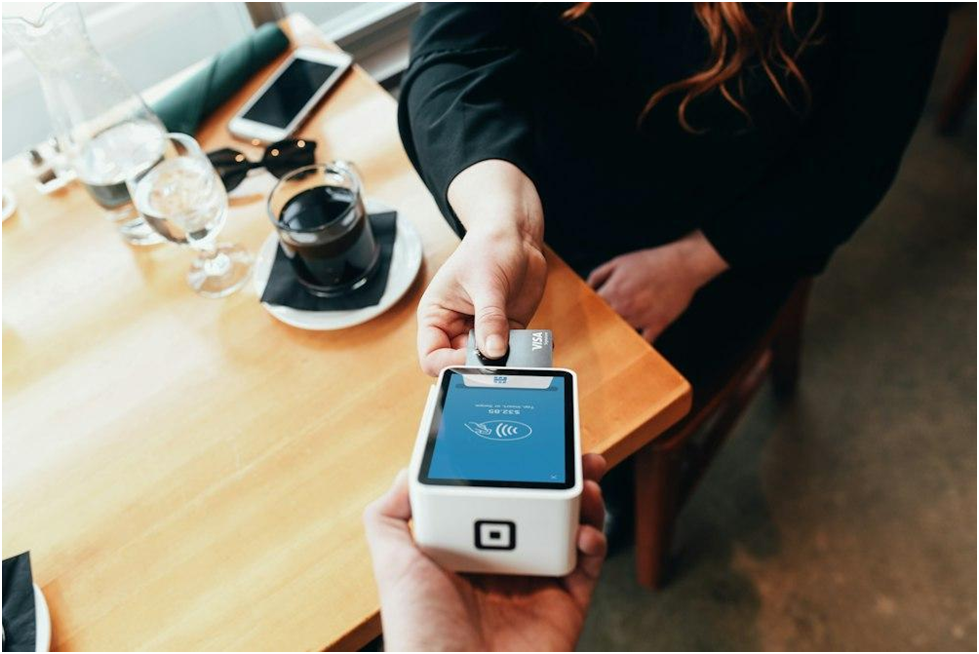Card Payments Industry Customer Experience and Trends
Card Payments Industry Customer Experience and Trends: How card processing affects customer experience, analysis of consumer trends, and adapting to changing consumer behaviours.
In the fast-paced world of retail, keeping up with the latest trends is essential to staying competitive. With the rise of contactless payment technology, businesses need to adapt their strategies to meet the changing demands of consumers. From tap-and-go cards to mobile payment apps, customers are increasingly looking for quick, convenient, and secure ways to make their purchases.
One key aspect of adapting to the contactless payment trend is ensuring that your point-of-sale systems are up to date and capable of processing these transactions. Investing in contactless payment terminals will not only make checkout faster for customers, but it will also show that your business is staying ahead of the curve in terms of technology. Additionally, providing multiple options for contactless payment, such as accepting Apple Pay, Google Pay, and Samsung Pay, will cater to a wider range of customers and make their shopping experience more seamless.
Another important factor to consider is the security of contactless payments. With the increase in cybercrime, customers are rightfully concerned about the safety of their personal and financial information. By implementing encryption technology and other security measures, you can assure your customers that their data is protected when making contactless payments at your store.
Furthermore, embracing contactless payments opens up opportunities for marketing and customer engagement. By collecting data on customers’ buying habits and preferences through their contactless transactions, you can tailor your marketing efforts to provide personalized promotions and offers. Sending targeted messages to customers based on their purchase history can increase loyalty and drive repeat business.
Overall, adapting retail strategies to the contactless payment trend requires a concerted effort to update technology, ensure security, and leverage data for marketing purposes. By embracing this trend, businesses can provide a better shopping experience for customers and increase their chances of success in an increasingly digital world. So, don’t wait any longer – hop on the contactless payment bandwagon and see your business thrive!
Online shopping has become the latest craze among consumers, with more and more people opting to purchase goods and services from the comfort of their own homes. As the popularity of online shopping continues to rise, so do the consumer trends and preferences when it comes to making payments.
Gone are the days of fumbling around for loose change or carrying wads of cash in your wallet. With the rise of digital wallets and online payment platforms, consumers now have a plethora of options at their fingertips. Whether it’s using a credit card, PayPal, Apple Pay, or even cryptocurrencies like Bitcoin, there is no shortage of ways to pay for your online purchases.
One of the biggest trends in online shopping and payment preferences is the shift towards mobile payments. With the majority of consumers now using their smartphones to browse and shop online, it’s no surprise that mobile payment options have become increasingly popular. Whether it’s scanning a QR code or using a mobile wallet app, consumers are embracing the convenience and ease of mobile payments.
Another emerging trend in online shopping is the rise of buy now, pay later services. With these services, consumers can make a purchase and pay for it in installments, rather than all at once. This allows consumers to spread out the cost of their purchases over time, making it easier to afford those big-ticket items.
In addition to mobile payments and buy now, pay later services, consumers are also becoming more conscious of the security of their online transactions. With the rise of cybercrimes and data breaches, consumers are looking for secure and reliable payment options. This has led to an increase in the use of biometric authentication and tokenization to ensure that their financial information remains safe and secure.
Overall, the consumer trends in online shopping and payment preferences are constantly evolving. From mobile payments to buy now, pay later services, consumers have more options than ever when it comes to making their purchases online. As technology continues to advance, it will be interesting to see how these trends continue to shape the way we shop and pay for goods and services in the digital age.
In today’s fast-paced world, convenience is key. When it comes to shopping, consumers want options that cater to their individual preferences and lifestyles. That’s why offering diverse payment options is more important than ever for businesses looking to stay competitive in the market.
Imagine this: you walk into your favorite store ready to make a purchase, only to realize they don’t accept your preferred method of payment. Frustrating, right? This scenario is all too common for consumers who have specific payment preferences, whether it be credit cards, digital wallets, or even cryptocurrency. By offering a variety of payment options, businesses can cater to the unique needs and preferences of their customers, making shopping a seamless and enjoyable experience.
But it’s not just about convenience; offering diverse payment options can also help businesses attract new customers and boost sales. When consumers have the freedom to choose how they want to pay, they are more likely to make a purchase and return for future transactions. In fact, studies have shown that businesses that offer a wider range of payment options see an increase in customer loyalty and satisfaction.
Moreover, diverse payment options can also help businesses stay ahead of the competition. With technology constantly evolving, new payment methods are emerging all the time. By staying up-to-date and offering the latest payment solutions, businesses can differentiate themselves from competitors and attract tech-savvy consumers looking for convenient ways to pay.
In conclusion, the importance of offering diverse payment options to consumers cannot be understated. By providing a variety of payment methods, businesses can enhance the shopping experience for customers, attract new clientele, and stay ahead of the competition. So next time you’re considering your payment options, remember that variety is the spice of life – and business.
Payment processing is a critical aspect for every mobile merchant in the UK. Today’s fast and digitally empowered business world relies on efficient payment systems for seamless transactions. While business owners may have particular preferences when choosing payment systems, they consider customer-centric solutions to boost their market credibility and demand. As a new business owner, […]
In the competitive world of business, keeping customers happy and coming back for more is key to success. And one often overlooked way to do this? Payment flexibility.
Picture this: you stroll into your favorite café, craving that irresistible cup of java. But, oh no – you left your wallet at home! No worries, because this café offers you the option to pay using your phone or even set up a tab. How convenient is that? You get your coffee fix without any hassle, and this café just earned themselves a loyal customer.
In today’s fast-paced society, customers value convenience above all else. And when it comes to making payments, flexibility is the name of the game. Whether it’s the option to pay with different methods, set up installment plans, or even just pay later, giving your customers the freedom to choose how they pay can make all the difference.
Think about it – when a customer knows they have the flexibility to pay on their terms, they are more likely to make a purchase in the first place. And once they’ve experienced this convenience, they are more likely to come back for more. It’s a win-win situation for both the customer and the business.
Not only does payment flexibility make customers happy, but it also helps build trust and loyalty. By showing your customers that you understand their needs and are willing to work with them, you are building a strong relationship that goes beyond just a single transaction.
So, if you want to keep your customers coming back for more, consider the link between payment flexibility and customer retention. Give your customers the freedom to choose how they pay, and watch as your business grows and thrives. After all, happy customers equal a successful business.
Over the years, the evolution of Point of Sale (POS) systems has had a significant impact on consumer behavior. Gone are the days of cash-only transactions and handwritten receipts. Today, with just a swipe or a tap, consumers can easily make purchases and transactions with the touch of a button.
The rise of POS systems has not only simplified the payment process but has also revolutionized the way consumers interact with businesses. With features such as online ordering, mobile payments, and loyalty programs, POS systems have made it easier for consumers to engage with their favorite brands and businesses.
For starters, the convenience of mobile payments has become a game-changer for consumers. With the ability to pay for goods and services using their smartphones, consumers no longer have to fumble for cash or worry about carrying around multiple credit cards. This seamless and quick payment option has not only made transactions more efficient but has also increased consumer satisfaction.
Furthermore, the integration of loyalty programs into POS systems has incentivized consumers to frequent their favorite businesses more often. By offering rewards and discounts through these programs, businesses are able to keep customers coming back for more. This not only boosts sales but also fosters a sense of loyalty and connection between the consumer and the business.
Additionally, the advent of online ordering through POS systems has made it easier for consumers to shop from the comfort of their own homes. With just a few clicks, consumers can browse products, place orders, and even schedule pick-ups or deliveries. This convenience has not only increased sales for businesses but has also catered to the changing needs and preferences of modern consumers.
In conclusion, the evolution of POS systems has had a profound impact on consumer behavior. From simplifying the payment process to fostering loyalty and convenience, POS systems have transformed the way consumers interact with businesses. As technology continues to advance, it will be interesting to see how POS systems further influence consumer behavior in the years to come.
In a world where convenience is king and instant gratification is the norm, businesses are having to rethink their traditional models in order to keep up with the demands of modern consumers. One trend that has been gaining momentum in recent years is the rise of subscription-based payments.
Gone are the days of one-time purchases and long-term commitments. Today, consumers want access to products and services on their own terms, and that’s where subscription-based payments come in. From streaming services to meal-kit deliveries, subscription models offer customers the flexibility they crave while providing businesses with a steady stream of income.
For businesses looking to adapt to this new payment landscape, there are a few key strategies to keep in mind. First and foremost, it’s important to understand your target audience and what they value most in a subscription-based service. Are they looking for convenience, affordability, or personalization? By tailoring your offerings to meet these needs, you can attract and retain loyal customers.
Another crucial aspect of adapting to subscription-based payments is ensuring that your business is equipped to handle the recurring revenue model. This means implementing systems and processes that can efficiently manage subscriptions, handle billing cycles, and address customer inquiries in a timely manner.
Additionally, businesses should consider diversifying their subscription offerings to appeal to a wider range of customers. This could mean introducing tiered pricing plans, offering add-on services, or partnering with other businesses to create bundled subscription packages.
Ultimately, the key to success in the age of subscription-based payments is flexibility and adaptability. By staying attuned to the needs of your customers and being willing to evolve your business model as needed, you can position yourself for long-term success in an increasingly subscription-driven market.
In today’s digital age, online transactions have become the norm for consumers around the world. With just a few clicks, we can purchase anything from clothes to groceries to electronics. But with this convenience comes the concern of payment security. How do we know that our personal and financial information is safe when we make a purchase online?
The impact of payment security on consumer trust cannot be overstated. When consumers feel confident that their information is secure, they are more likely to make purchases online. On the other hand, if they have doubts about the security of a website or payment platform, they may choose to take their business elsewhere.
So, what exactly is payment security and how does it affect consumer trust? Payment security refers to the measures put in place to protect consumers’ financial information during transactions. This can include encryption, tokenization, multi-factor authentication, and other security protocols. When consumers see that a website or payment platform takes these measures seriously, they are more likely to trust that their information is safe.
In addition to keeping consumers’ information safe, payment security also plays a role in preventing fraud. When consumers know that a website has strong security measures in place, they are less likely to be victims of scams or identity theft. This gives them peace of mind when making online purchases, leading to increased trust in the company or platform.
Ultimately, understanding the impact of payment security on consumer trust is crucial for businesses that operate online. By prioritizing security measures and being transparent about them, companies can build trust with their customers and encourage them to make more purchases. After all, when consumers feel safe and secure, they are more likely to become loyal customers.
Have you ever stopped to think about why you choose to pay for things the way you do? Whether you prefer tapping your card or carrying cash, there’s a fascinating psychology behind consumer payment choices that can reveal a lot about our behavior and preferences.
We all have our own unique reasons for choosing how to pay for our purchases. For some, the convenience of contactless payments is irresistible – why bother fumbling around for cash or typing in a pin when you can just wave your card or phone? Others might have a preference for the tangibility of cash – the feeling of handing over physical money can make us more aware of what we’re spending, leading to more thoughtful purchases.
But it’s not just about convenience or tangibility. Our payment choices can also be influenced by our emotions and perceptions. Research has shown that people tend to spend more when using credit cards compared to debit cards or cash. The reason? Credit cards create a sense of dissociation between the act of paying and the pain of parting with our hard-earned money, making it easier for us to overspend.
The way we pay can also be influenced by our past experiences and upbringing. If we grew up in a household that predominantly used cash, we might feel more comfortable carrying and using physical currency. On the other hand, if we were introduced to online banking at a young age, we might feel more at ease with digital payments.
So the next time you reach for your wallet or phone to pay, take a moment to reflect on the factors that are influencing your decision. Are you paying with emotion, convenience, or habit? Understanding the psychology behind consumer payment choices can not only help you make more informed decisions, but also shed light on the intricate ways in which our minds shape our spending habits.
In this digital age where convenience is king, it’s no wonder that contactless payments have taken the world by storm. With just a tap or a wave of a card, consumers can breeze through checkout lines without the hassle of digging through their wallets for cash or fumbling with chip readers. It’s a game-changer, revolutionizing the way we shop and pay for goods and services.
But this rise in contactless payments has also raised the bar for consumer expectations. In a world where everything is at our fingertips, it’s only natural that we expect the same level of convenience and efficiency when it comes to our payment methods. We want transactions to be seamless and quick, without any hiccups or delays that disrupt the flow of our day.
Retailers and businesses are taking note of this shift in consumer behavior and are adapting their payment systems to keep up with the demand for contactless options. From small mom-and-pop shops to major retailers, everyone is jumping on the contactless bandwagon to meet the needs of their tech-savvy customers.
But it’s not just about convenience. Contactless payments also offer added security and peace of mind for consumers. With fraud protection features built into contactless cards and mobile payment apps, consumers can make purchases with confidence, knowing that their sensitive information is safe and secure.
As more and more consumers embrace contactless payments as their preferred method of transaction, businesses will need to continue to innovate and streamline their payment processes to meet these evolving expectations. The future of commerce is contactless, and businesses that fail to adapt risk falling behind in the ever-changing landscape of consumer preferences.
So whether you’re a die-hard fan of contactless payments or you’re still on the fence about making the switch, one thing is for sure: the rise of contactless payments is here to stay, and consumers’ expectations will only continue to rise as technology advances. Stay ahead of the curve and embrace the convenience and security that contactless payments have to offer – your customers will thank you for it.











